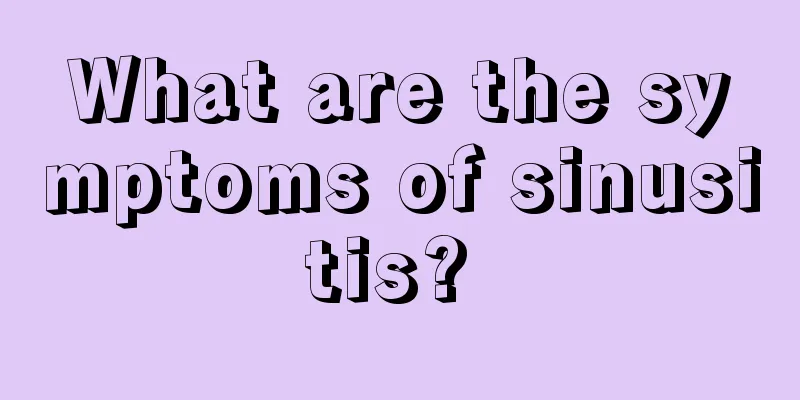What are the symptoms of sinusitis?

|
Sinusitis troubles many people, so we need to pay attention to its symptoms. The most common symptoms are nasal congestion, thick runny nose, local pain, and headache symptoms, so once these symptoms are found, we must pay attention to them. 1. Nasal obstruction: Due to congestion and swelling of the nasal mucosa and accumulation of secretions, persistent nasal obstruction may occur on the affected side. 2. Purulent mucus: There is a lot of mucus or purulent secretions in the affected side of the nose. There may be a little blood in the mucus at the beginning. The purulent mucus of patients with odontogenic maxillary sinusitis has a foul odor. 3. Local pain and headache. In addition to nasal pain caused by inflammation, acute sinusitis is often accompanied by severe headache. This is caused by swelling of the sinus mucosa and compression of secretions or negative pressure after the secretions are emptied, which stimulates the trigeminal nerve endings. Acute sinusitis pain has its regularity in time and location. The anterior group of sinuses are close to the surface of the head, and the headaches they cause are mostly in the forehead, inner canthus and cheeks. The posterior group of sinuses are deep in the head, and the headaches they cause are mostly in the top of the head and occipital area. Acute maxillary sinusitis: often forehead, cheek or upper teeth grinding pain, mild in the morning, severe in the afternoon. Acute frontal sinusitis causes severe forehead pain in the morning, which gradually worsens, eases in the afternoon, and disappears completely by the evening. The headache caused by ethmoid sinusitis is usually mild and limited to the inner canthus or root of the nose, but may also radiate to the top of the head. Sphenoid sinusitis presents with pain deep in the eyeball that may radiate to the top of the head, and may also cause occipital headaches that are mild in the morning and severe in the afternoon. However, some people's pain symptoms are atypical, and it is impossible to determine the affected sinuses based solely on the characteristics of the headache. 4. Decreased sense of smell. |
<<: What is the best way to treat lumbar myofasciitis?
>>: How to effectively treat myofasciitis?
Recommend
How to improve metabolism
For many people, the human body must have necessa...
Taboos for talus fracture
Talus fractures are also relatively common in lif...
The 4 main causes of liver cancer that you should know about. Liver cancer is the most common cause.
Among all the common cancers nowadays, liver canc...
What are the effects and functions of white chalcedony?
There are many types of chalcedony, including whi...
Is salt water foot bath effective?
The foot is also known as the second heart of the...
Symptoms of late stage bone metastasis of prostate cancer Dietary conditioning for patients with late stage bone metastasis of prostate cancer
In real life, some friends will suffer from prost...
What season is suitable for eating Lingzhi
Ganoderma lucidum is a very nourishing food. Many...
Can iron wire worms be eaten
The appearance of iron wire worms in the human di...
Tips to relieve itching
Summer is the season when mosquitoes are prevalen...
How can skin cancer be detected
Skin cancer is one of the most common cancers. It...
Metastasis pathways and symptoms of lung cancer
Where do the symptoms of lung cancer appear? Thro...
How to quickly relieve a blocked nose
Nowadays, many people often suffer from nasal con...
What is the reason for urine occult blood 1+?
From the perspective of clinical incidence, occul...
What are the effects of dietary fiber on the human body
Dietary fiber is a common and hot term in the mod...
What causes hair loss and what should I do?
Wouldn't it be very painful to see a lot of h...









